[First of all: apologies for this one being late. I lost quite a bit of writing time last week flying back from Athens and recovering from jet lag (which, for me, tends to involve sleeping for 15 hours straight), but I think everything is just about back on track now!]
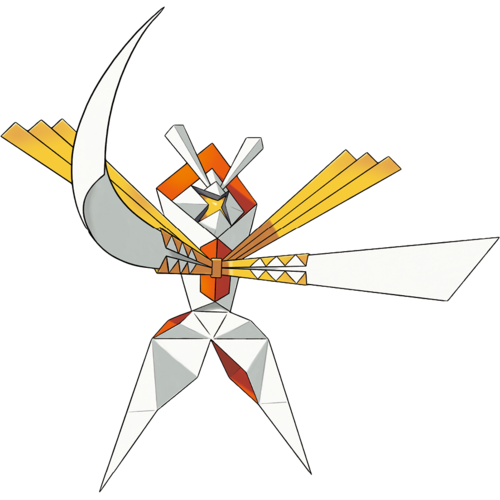
Ever had a paper cut?
Hurts, doesn’t it?
Well, today’s Pokémon, the Ultra Beast Kartana, would like you to know that it lives to cause you that pain. Every time you turn a page in a book too quickly and feel a sudden, sharp sting, or every time you lick an envelope and your tongue or lip screams at you to abort the mission because something has gone horribly wrong, Kartana is there, watching. And laughing.
You’re welcome.
In stark contrast to its version-exclusive counterpart Celesteela, one of the largest and heaviest of all Pokémon at over 9 metres tall and weighing 1000 kilograms, Kartana is not only the smallest Ultra Beast but among the smallest of all Pokémon. It’s only 30 centimetres tall, and weighs just 100 grams, tied with Gastly, Haunter, Flabébé and Cosmog for the title of the lightest Pokémon currently in existence. It’s so light because its entire body is made, as far as we can tell, of folded paper: it’s an origami figurine, hence the name “Kartana,” from katana and the Latin carta/charta, meaning paper (or, in later romance languages, a playing card – an unlikely choice of weapon, but not an impossible one). Even Kartana’s English species designation – the Drawn Sword Pokémon – could be taken as a paper-related pun: drawn, like a sword from a scabbard, but also drawn, like a picture on a sheet of paper. Wicke says that, because of the nature of its papery body, Kartana can easily dodge physical attacks, but is vulnerable to both fire and moisture. Strictly speaking this isn’t actually true; Kartana’s type is Grass/Steel, so it is extremely vulnerable to fire, but it can deal with water just fine. Wicke’s speaking off-the-record, though, so we’ll let her go with a warning. And there’s some truth in what she says: Kartana’s physical defence stat is extremely high, presumably because it’s so hard to hit the damn thing with a physical attack in a way that doesn’t just make it bend, fold and bounce back. Its special defence, though, is abysmal, so just about anything energy-based will work pretty well, including many Water attacks (resistance be damned).
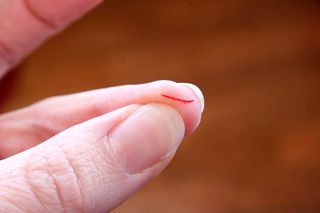
In modern origami, influenced by European paper-folding styles, you’re supposed to use only square sheets of paper with no cuts, but traditional Japanese paper-folding actually allowed different shapes and some cutting – and if you want to cut something… oh boy. Though its sword-like arms are the most vicious, every part of Kartana’s tiny, flimsy body is sharpened to a deadly razor edge. It’s the only Pokémon that can learn Cut on its own, aside from Farfetch’d, who only picks it up in Let’s Go – which, since there are no HMs in Sun and Moon, means it’s the only Pokémon that can learn Cut in those games at all. Cut isn’t exactly an impressive attack, granted, but it does illustrate Kartana’s devotion to fitting pretty much every cutting or slashing move in existence into its movepool, even really weird ones like Guillotine and Sacred Sword. According to the Pokédex, it isn’t even aggressive on its own, but can cut through a steel tower with a single stroke. In its Ultra Space realm, we see a wild Kartana slice clean through a tall rock formation. Real paper cuts are… generally not quite this bad. There’s not a lot of actual medical research on them, because apparently doctors have “more important things to research” (a concept which is thoroughly alien to me, since researching unimportant things is basically a lifestyle for me at this point, both on this blog and in my real life, as a PhD student working on ancient Roman window glass). There are a few points of broad consensus, though. Paper cuts are much more painful than they really “should” be, because we tend to suffer them on very sensitive parts of our bodies, like our fingertips. They’re also usually not deep enough to cause much bleeding – in a deeper, more severe cut, blood would cover up the nerve endings and reduce their exposure to air and irritants, but in a paper cut, those nerve endings just keep firing. Basically, paper cuts (being a type of injury that doesn’t really exist in nature) trigger bugs and loopholes in our bodies’ ability to perceive injury, causing pain that is wildly out of step with how much danger we’re actually in. Considering its tiny size, Kartana too is almost outlandishly dangerous.
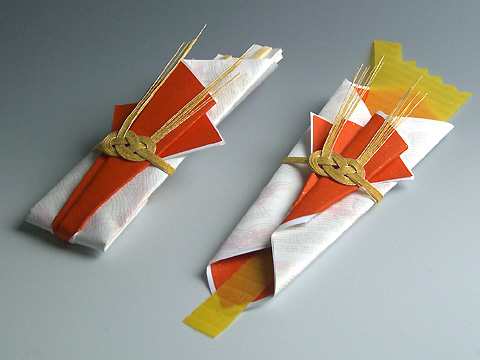
Bulbapedia makes two suggestions for specific examples of Japanese paper-folding that might have inspired Kartana, one of which I buy and one of which I don’t. The first is noshi, which are pieces of origami attached to congratulatory or celebratory gifts as an expression of good fortune. They’re some of the last remnants in modern Japanese culture of a time when high-quality paper was rare and expensive, and origami was therefore practised by the nobility and used for important ceremonial functions. Noshi are usually made from two sheets of paper, one red and one white, which create pleasing angular patterns of colour when folded together, much like the patterns of white and bright red on Kartana’s body. In ancient Japan, the paper would be wrapped around a slice of tasty dried abalone; today, noshi are more likely to include strips of yellow paper that symbolically stand in for the traditional shellfish. The yellow pauldrons projecting from just above Kartana’s arms seem like they’re meant to complete that image. As far as I can see, the traditional function of noshi doesn’t really play into anything Kartana does, but the specificity of the imagery in Kartana’s design makes it hard to deny that there’s a reference, in my opinion. The suggestion I’m more sceptical of is the idea that Kartana might also be inspired by shikigami, a type of spirit that can be conjured by practitioners of onmyōdō, Japanese sorcery. Shikigami are traditionally invisible and formless; one way to control them is by binding them to paper dolls, but there isn’t really a standard design for the dolls (they don’t even have to be humanoid), and other modern re-imaginings of shikigami don’t reference their paper bodies.

Kartana’s domain is the Ultra Forest, where we find it beneath a dense canopy of enormous trees. The trees in Kartana’s world have leaves that look like little rectangular slips of paper, suggesting that we have in fact stumbled onto a planet dominated by origami-based life forms. The ground is sandy, and seems to have been raked into circular patterns around rock formations, like a traditional Japanese zen garden, and the area’s ambient music evokes Japanese string instruments and bamboo flutes, a little like the theme music of the Kimono Girls from Gold and Silver. Uniquely amongst all the worlds we’ve explored so far (though there’s another still to come), Kartana’s Ultra Forest is also inhabited by humans – or at least, beings that look like humans. These are elderly men dressed in white tunics and wearing rice hats, and they are referred to as “Kartenvoys,” a portmanteau of Kartana’s name and the English word “envoy” (meaning an emissary or diplomat). In Japanese, their title is kamitsukai, which again references Kartana’s Japanese name (Kamitsurugi). The –tsukai suffix conveys “one who uses/tames/manipulates X,” so “Kartana-user” seems decent as a literal translation (see doragon-tsukai, the Japanese name for the “Dragon Tamer” trainer class). Tsukai can also be a standalone word meaning “messenger” or “ambassador,” hence the “envoy” translation in English, which could be taken to imply that it’s Kartana who commands them, not the other way around [EDIT: The more I think about it, though, the more I think the English name might be something of a mistranslation]. French calls them Kata-Sensei and Italian calls them Mastro Karta, so it seems like there’s supposed to be a common thread of skill and seniority in those translations. The very best is German, which gives them the utterly fantastic title Katagami-Ass (Ass seems to be the accepted transliteration of the English “Ace” – compare Aero-Ass, the German name for Aerial Ace).
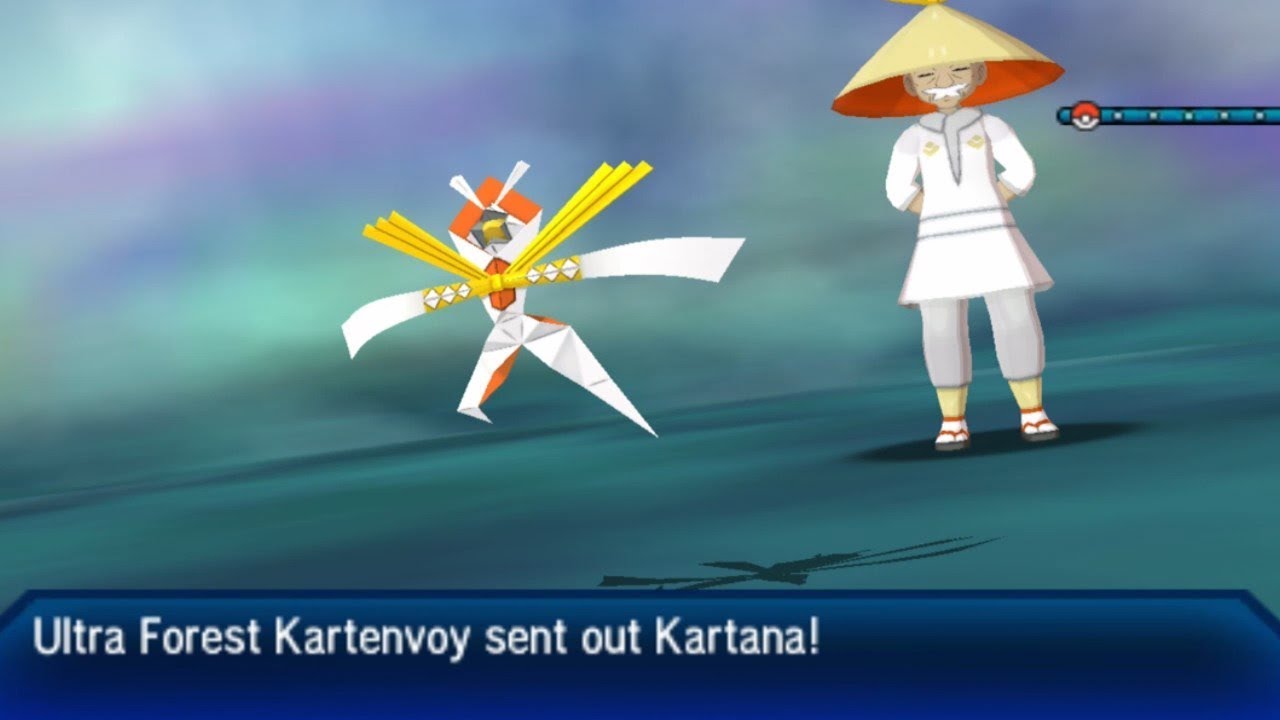
We meet three Kartenvoys. The first speaks in English but uses Yoda syntax, challenging the player to go and catch Kartana. The other two speak only in broken Japanese, and will attack you as you pass, summoning their own Kartana to fight you. Unlike every other trainer in the game, as far as I can remember, the Kartenvoys don’t use Pokéballs – their Kartana just appear when the battles start. In the Japanese version of the game, all three Kartenvoys say pretty much the same things (in Japanese), but their dialogue is, unusually, written entirely in katakana – the script used for (among other things) foreign words and onomatopoeia. This could be meant to convey a strange accent, or even that they’re just making the sounds of Japanese words without actually understanding them. The general effect, whichever language you’re playing the game in, is that the Kartenvoys talk in a way that’s strange and difficult to understand, as if they aren’t able to properly speak the same language as the player, or perhaps any normal human language at all. This doesn’t seem to be a problem for the Ultra Recon Squad, who are deeply unfamiliar with Alolan culture but don’t seem to have any trouble picking up the player’s language. I think we’re supposed to understand that there’s something more going on here than an ordinary language barrier – the Kartenvoys fundamentally think and communicate differently, maybe because they’ve developed some kind of symbiotic relationship with Kartana. They could be natives of the Ultra Forest, but given their “wise old sage” aesthetic, I can also imagine that they’re involved in a sort of monastic situation: travelling to the Ultra Forest from elsewhere (maybe even from Alola) through the Ultra Wormholes in order to learn from Kartana, and staying there for decades at a time, maybe even their entire lives. On the other hand, if they originated in the Ultra Forest and are a natural part of its ecosystem, they might play some role in Kartana’s life cycle, folding pieces of the forest’s papery vegetation into new bodies for the next generation of paper Pokémon.
This is getting to be more speculative than I can strictly justify, so let’s talk quickly about Kartana’s battle style and wrap this up.
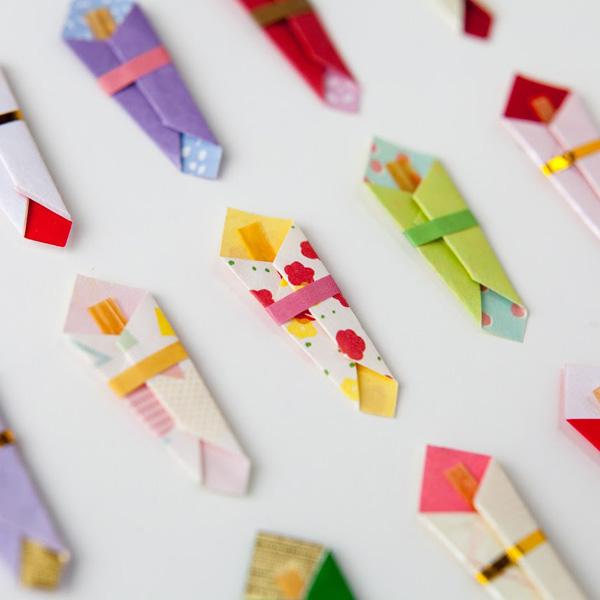
Kartana has the highest attack stat of all non-mega Pokémon, just narrowly beating out Deoxys’ attack form, and behind only Mega Heracross and Mega Mewtwo-X (and most Pokémon with stats that high are mega evolutions and can’t use items, giving Kartana another edge over them). It doesn’t have the highest physical damage output of all Pokémon, though, because Kartana specialises in cutting and slashing techniques, and these are generally not high-power moves, which holds it back a bit. Its primary attack types, Grass and Steel, are also not inspiring on offence (defence is another story; like fellow Grass/Steel-type Ferrothorn, Kartana has only two weaknesses – Fire and Fighting). Kartana’s strongest attack is Leaf Blade, which is perfectly respectable and can make short work of most Pokémon that don’t resist it, but for a Steel attack it has to turn to the decidedly less inspiring Smart Strike. Smart Strike never misses, but its power is underwhelming. Dhelmise can actually outdamage Kartana’s Leaf Blade with Power Whip, and can almost match its Smart Strike with Anchor Shot. The difference is that Kartana is also worryingly quick, and gets stronger every time it scores a knockout, thanks to Beast Boost (it gets Swords Dance too, although honestly that almost feels like overkill). Leaf Blade and Smart Strike should pretty much always be complemented with Sacred Sword, first because it’s Kartana’s next-strongest attack, second because it needs a Fighting attack to avoid being resisted by everything.
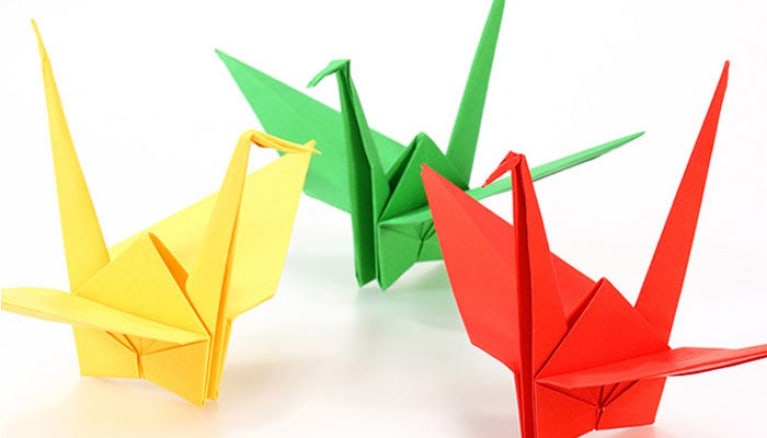
If you want four attacks on Kartana, your main choices for the last slot are Knock Off (or Night Slash if you don’t have access to Ultra Smoon), X-Scissor and Psycho Cut. Kartana’s matchups tends to split pretty cleanly into Pokémon that immediately fold to Leaf Blade, Smart Strike or Sacred Sword, and Pokémon that will just kill you, no matter which moves you’re using. There’s not a lot of Pokémon that Kartana beats if and only if it takes X-Scissor or Psycho Cut. That being the case, picking Knock Off for its utility value is probably the way to go. Outside of cutting and slashing moves, Kartana’s movepool is surprisingly (or unsurprisingly) narrow. It gets Synthesis and, from move tutors, Iron Defence, and… well, its physical defence is really good, I’ll grant you, and it does have all those Steel-type resistances, so I guess you could EV-train to shore up its HP and play it as a physical tank, but… ehhhhhhh? The only really useful support move on its list is Defog – presumably it unfolds and refolds itself into a fan. Defog is a handy “toolbox” move for competitive games, mostly for clearing entry hazards (it clears Reflect and Light Screen too, which are a bit more likely to turn up in single player); just remember that it blows away your Spikes, Stealth Rocks and so on. Whenever you do anything with Kartana that might result in it taking a hit, bear in mind that its special defence is literally paper-thin: even a moderately powerful special attack can potentially one-shot Kartana if it doesn’t resist it (luckily, of course, it’s a Steel-type and resists half the damn type chart), and almost any special Fire attack will torch it instantly.
For my final verdict on Kartana… well, the Ultra Beast weirdness is alive and well, with a paper ninja that can kill you in sixty different ways by accident and is worshipped by a cult of babbling hermits. Deciding to base Kartana’s design on, essentially, the Japanese equivalent of a greeting card (while making it a veritable killing machine) is… something I find it difficult to get 100% behind, but the bright colours and angular shapes certainly do make for a striking design, and there is something to be said for introducing the world to quirky features of Japanese culture through the medium of Pokémon. Besides, I have to wonder what other origami Pokémon might exist on Kartana’s homeworld – deadly dive-bombing paper cranes, anyone…?

Weird annoyance: “Kartenvoy” only works properly as a pun when spoken out loud, which from the sounds of it may not even happen in the event itself.
LikeLike
Sorry, I’m not sure what you mean? What pun, and why doesn’t it work?
LikeLike
The second “a” in “Kartana” and the “e” in “envoy” are the same sound, and the fact that you couldn’t tell I was talking about that is precisely the point.
LikeLiked by 1 person
Upon closer inspection, I may have been pronouncing “envoy” wrong all this time, but that just means the name scans better in speech which still maintains the spirit of my objection, right?
LikeLiked by 1 person
Honestly, Kartana doesn’t feel all that alien to me (in the context of Pokémon). I get that sentient origami is certainly impossible, but… I don’t know, it doesn’t feel as strange as other Ultra Beasts. Maybe that’s just me.
I don’t dislike it though. It’s an interesting idea, even if I feel Celesteela is way more interesting.
LikeLiked by 1 person
I think it’s possible to conceive of it as an ordinary Pokémon, but it would have to be glossed somehow as, like, a paper doll that was brought to life (à la Baltoy) by “x-rays from the moon” (à la Grimer; no I am never going to let them live that line down). As an Ultra Beast it’s allowed to be, like… “this is just what Pokémon are like on that planet!”
LikeLike
Fair. I know this would never be a thing but… it would be cool to see a few more species for each Ultra World. Give them some more context. Or even just alternate “forms”. I agree that given this context, they don’t need to focus on how Kartana can exist as a sapient(?) piece of folded paper, I guess my suspension of disbelief with the series has just been stretch so thin that half them time I assume magic. Most of the Ultra Beasts simply look “extra terrestrial” (or borderline lovecraftian in a few cases), stuff that I can accept that maybe in very alien settings could have evolved. While Kartana my mind lumps in with “Pokémon that are animated inanimate objects”…
Huh… I feel like I realized something. Maybe Kartana is simply SO alien to me that I don’t see it as a creature anymore, and that’s the reason why I have trouble seeing it as an Ultra Beast. Perhaps I need to reconsider this…
LikeLiked by 1 person
My urge to go out and make Pokemon Origami has increased 10-fold after reading this xD
Also, very much enjoyed the info about paper cuts. Cat scratches must be the same right? They outright burn!
This is in sun/moon, right? I’ve just re-started moon (after never getting very far with it the first time), so I’ll have to watch out for it.
LikeLike
Glad you enjoyed it! Kartana only appears in Sun and Ultra Sun, unfortunately (and only Ultra Sun/Moon let you travel to the Ultra Beasts’ own worlds). On Moon you’ll meet Celesteela.
LikeLiked by 1 person
To add to Pokemaniacchris’s comment, you also cannot encounter Ultra Beasts (aside from Nihilego) until after you beat the game, in a mini post game story. So you’ll have to keep playing after the credits roll to see Celesteela.
LikeLiked by 1 person
Ah darn.. I’ve been a bit off with the games. I played like every one religiously (both versions, cause.. you know EA owned me) up until Diamond/Pearl, then I got Moon but didn’t finish it and lost the hype a bit. I’m back on the hype train for sword/shield though! Maybe I’ll find time to sneak ultra-sun in there somewhere! Is the extra content worth it?
LikeLike
Honestly… eh. They mostly feel like add-ons in the vein of Crystal/Emerald/Platinum, which would have been fine ten years ago, but after getting Black and White 2 as full sequels with a new storyline in generation V, and then nothing at all in the “third game” slot in generation VI, it seems to me like a substantial regression. Like, if they were PC games, everything in Ultra Sun and Moon would be a $20-30 DLC/expansion, and to me that’s… something of an argument for skipping the first Pokémon game of each generation and waiting for the one that has all the bells and whistles. I mean, obviously *I* can’t do that because, like, I have this blog to keep up, but if I were in the business of telling people what to buy, that’d be my line.
LikeLiked by 1 person
Agreed with Pokemaniacchris. The extra content is only worth it if you’re a pretty hardcore fan. Th story is admittedly handled a LITTLE better, but it’s not different enough to warrant paying full price for the same game. The post game story is 100% fan service (not in a suggestive way, more that the story is off the walls ridiculous and simply there to reference all the previous games). The game only adds 4 new Pokémon (2 within an evolutionary line and then 2 version exclusives, and the latter 2 are post game). And the Ultra Wormholes add some lore but that’s about it, you won’t get much out of it that Chris here isn’t covering. Not to say it’s not enjoyable if you already have the originals… but don’t pay more than $20-$30 for this unless you’re a hardcore fan, and even $30 is pushing it. It’s the definitive edition but not worth buying a second time, if you get what I mean.
LikeLiked by 2 people